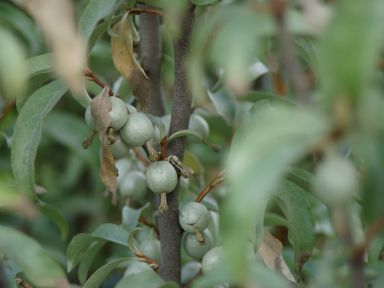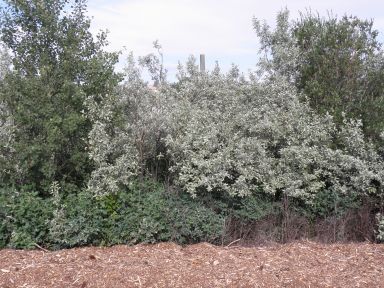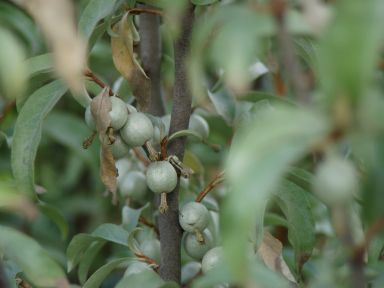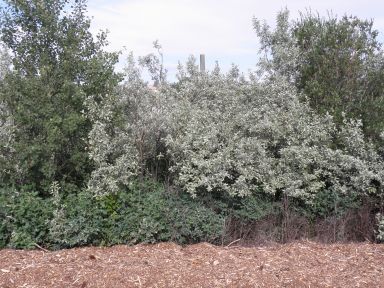Wild About Flowers
Elaeagnus commutata - Silverberry
Elaeagnus commutata - Silverberry
Couldn't load pickup availability
Silverberry is a hardy, drought-tolerant shrub with striking silvery leaves and fragrant yellow flowers that bloom in late spring. Reaching up to 10 feet tall, it adds a bold, luminous presence to prairies, riverbanks, and open woodlands. The blooms are rich in nectar and highly attractive to pollinators, while the shimmering berries that follow provide food for birds and wildlife well into the season.
Thriving in well-drained soils, Silverberry is well suited for windbreaks, erosion control, and naturalized plantings, where it spreads by underground suckers to form dense thickets. Its ability to fix nitrogen improves soil health, making it an ideal choice for restoring disturbed sites, shelterbelts, and rural landscaping projects. Naturally found in tough conditions, including poor or sandy soils, it flourishes in dry prairies, open woodlands, and along riverbanks. The dense, woody stems and tough, leathery foliage make it generally unpalatable to deer, allowing it to thrive even in high-browse areas.
Bloom Times & Plant Sizes
Bloom Times & Plant Sizes
Important Information - The "Bloom Period" is an indicator of the time period within which the wildflowers will bloom and does not describe the time period that a single plant will bloom. The "Sizes" listed are intended to be a general guideline to consult during plant selection. - Plant growth and bloom times will vary depending on geographical location & individual site conditions.
Edible & Medicinal Info Disclaimer
Edible & Medicinal Info Disclaimer
The Edible & Medicinal information on this site is for informational purposes only and should not be acted on without thorough research and professional guidance. We are not responsible for any adverse effects resulting from the use of or misidentification of plants.
Share


Plant Specifics
Seeds Per Pack
Seeds Per Package: 20
Light Conditions
- Sun
- Part Shade
Soil Conditions
- Loam
- Well Drained
- Sandy
- Gravelly
- Dry
Height
Width
- Spreading
Bloom Colour
- Yellow
Month of Bloom
- May
- June
Vigorousness
- Very Aggressive
Deer Resistance
- High
Features
- Birds
- Butterflies
- Bees
- Fragrant
- Berries
- Rural Spaces
- Medicinal Properties
- Edible Parts
Chinook Exposure
- Fully Exposed
Distribution Info
Silverberry is native to BC, AB, SK, MB, ON, and YT in Canada and occurs in the northern Great Plains and western U.S.
Traditional Edible & Medicinal Info
The berries of Elaeagnus commutata are edible but dry and astringent, traditionally used in pemmican and survival food, though they are more commonly eaten by wildlife. Medicinally, infusions from leaves and bark were used for pain and inflammation, while berry and bark poultices were applied to wounds and rashes. The berries were also used for digestive support, and while not toxic, excessive consumption may cause digestive discomfort due to their astringency.


